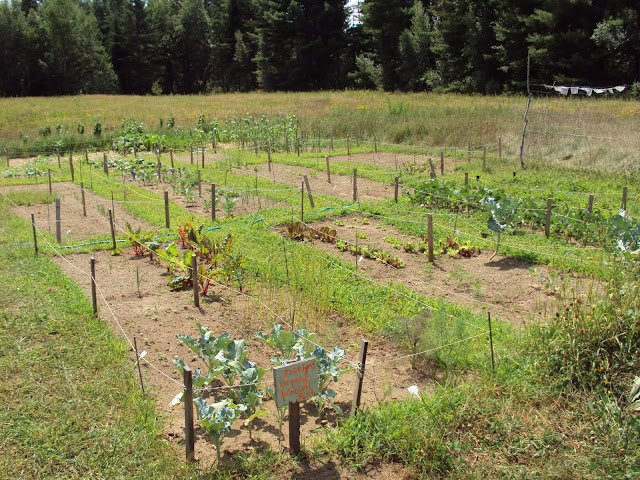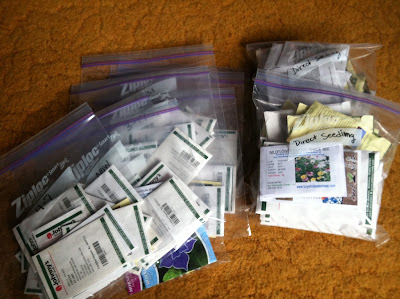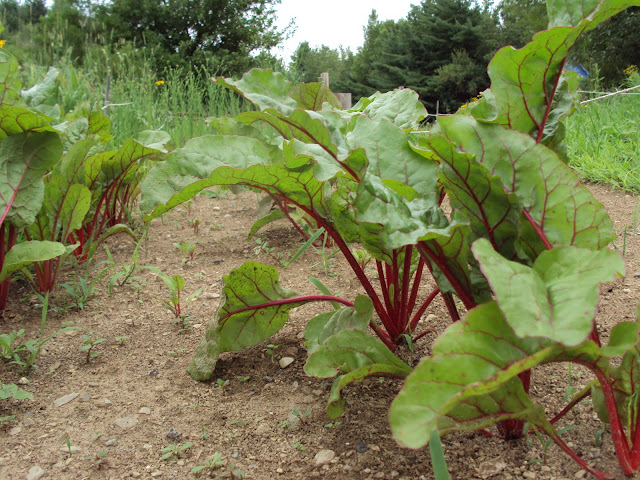As always I have a ton to get caught up on for this blog, so it will be another long one.
We have been having quite a few deer and turkey sightings which are always fun, hopefully one of these times I'll have my camera so I can get pictures!
We have been cooking up a storm as always; however, I forget to take pictures most of the time (I am trying to do better w/that.) It has been SO much fun using the food from our garden to create amazing, delicious meals and even more fun to eat them.
Earlier in the summer I made Kaya some more organic dog cookies (she's on a diet now since her hunting vest no longer fits her, so this was the last batch for awhile.) I also made a strawberry rhubarb crisp with the strawberries from our field/forest and rhubarb from the yard, it was amazing!

Yummy tofu/tomato/lettuce/cucumber/cheese sandwich:

Pieter made a risotto with the sweet peas from the garden and it was my favorite risotto yet (though I think I say that with each new one that he creates.) The peas had such an amazing flavor!

Our friends Kaitlyn and Kim came to visit for the 4th of July weekend. We started the weekend off meeting them in Rockland at Primo for another incredible meal. Primo is by far my favorite restaurant that I've been to. They have a beautiful property with a great farm to table set up. The staff is very knowledgeable and attentive and we always have the best time there! Kim is moving to Cali with her boyfriend and we wish her the best of luck!
The weekend ended with Piet's birthday. Kaya got sprayed by a skunk which made for a smelly birthday for Pieter. He made a veggie lasagna that was the BEST lasagna I've ever had. He used veggies from our garden and the farmer's market and it was soooo good.

For one of his birthday presents, I got Pieter one of the little grills so that we could finally cook out. Even though it is small we have been really enjoying it. Veggie burgers, veggie dogs, corn on the cob and yummy potatoes!

My mom got us an awesome tent room so that we can sit outside when the bugs are bad. We've been using it to eat our cookout food in!

We had a blight scare (the University confirmed that it wasn't blight) so we pulled up a couple of our potato plants and had a nice treat of early potatoes. They were the creamiest, tastiest potatoes I have ever had. YUM!

Our snake friends are still hanging around everywhere....

Piet went to California for Jeff and Lauren's wedding and had an awesome time! Kaya and I missed him a lot though and Kaya waited patiently for him to arrive home.

This woodpecker hangs out by the bird feeder constantly and is slowly pecking our wooden post away, but he sure is cute!!

We have had an abundance of berries - blueberries, raspberries, and blackberries!



I got some new plants for the front flower garden - 3 lavender plants, a lily plant, and a flox plant. I've ordered some more bulbs to plant in the fall so next year this flower bed should look great all throughout the spring, summer and fall. I also found some untreated, uncolored mulch to apply to all of the flower beds and the herb garden, which made them look much better!

The flox 'David' plant:


The Asiatic lily plant:

The herb garden before I added the mulch and before I had to cut all of the mint and catnip for the electric company guy (too many bees):


After mulching and cutting the mint and catnip:


The wild flower garden by the front door just keeps growing and growing with more blooms every day. It's really great!



The flower garden by the barn has been gorgeous all summer. The morning glories are very full with lots of blooms and the mini gladiolas have been a delightful surprise every time a new bulb opens with a different array of colors.









The vegetable garden has been doing really well, we've been able to harvest something from it almost every day for quite awhile now. The zucchini, summer, and yellow crookneck squashes produce really beautiful flowers.



The zucchinis and squash are really cute when they are tiny.





The zucchini and squash plants grow so quickly! You can see the huge difference in just a month.



Our pickling cucumbers are a bit delayed, but they are almost ready for the first harvest!


Our tomatoes also seem a bit delayed but our yellow Taxi tomatoes are finally coming, hopefully the rest of the tomatoes will follow soon!

The flax flowers are beautiful!

The broccoli plants are huge and finally flowering. Not sure if I'll grow it again next year, the plants are SO big for very little broccoli.



The bush bean and French filet bean plants are highly productive, we've been eating at least a handful of beans every day for a couple of weeks now.



Our Rhubarb Swiss chard plants have been one of our favorite and most productive of the garden. We cook it down with a little olive oil and garlic, it's SO delicious.

We got a decent amount of garlic (all of our cloves that we planted were successful.) We are definitely planting about three times as much this fall as we use about a full head of garlic everyday. Our garlic is nice and spicy and soo yummy - a million times better than the garlic from the store! Plus you get a ton of the scapes to cook with from the hardneck garlic, a great added bonus!




The corn is growing quickly and finally starting to pollinate each other and we have some silks forming!



We've gotten a handful of carrots so far with a ton more almost ready and even more for candy carrots after the first frost.


We harvested a TON of sweet peas, they were so good! We will be planting more next year, I want to try two different varieties.



Lettuce was, of course, our easiest and fastest growing crop (besides the radishes). We have three different lettuce mixes along with four different types of head lettuce growing and have harvested a lot already with a ton more still growing.

We harvested a few beets with a lot more still growing, some nearly ready, some younger so they can be harvested in the fall.

Our landlord has been very generous with his cucumbers and I've made almost 30 jars of pickles so far!

Random pictures of the veggie garden:





Random pictures of forest things from some of our "family forest walks":





This butterfly seemed to be following us one day:

This poor butterfly was almost completely missing one of it's wings, it made me really sad :(




We had a deer eat most of our melon and acorn squash plants and a couple of our zucchini plants (and a couple of almost ready zucchinis). So with some advice from the aunties and mom we set out to deer-proof the garden. I collected some big fallen branches from the woods and dug some holes to put them in. Pieter went into town and got some pie plates and nylons for Kaya's hair. I attached everything to the branches and string and so far, so good! It's definitely noisy in the wind so we're hoping that will keep them away from the garden!




We woke up this morning to find that we had unintentionally caught four little mice in our weeding bucket! They were released into the field, so I'm sure we'll see them again!
Until next time,
Sara & Pieter
Keep it local and organic!







































































































